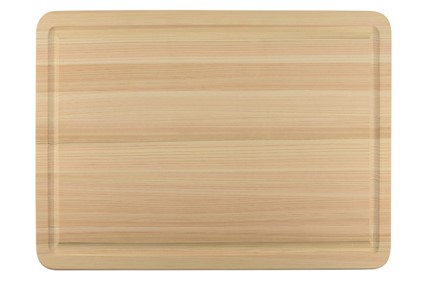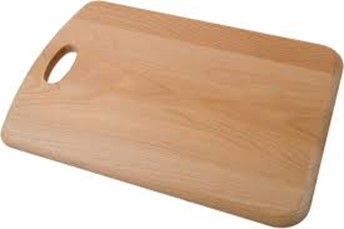Introduction
As a culinary lover, I know the importance of having the right tools in the kitchen. One of the most essential items in my kitchen is my cutting board. In this article, I’ll be sharing my experience with buying a cutting board, as well as some of the benefits and advantages of using one. I’ll also provide some key points for selecting the right cutting board for your needs.

My Experience with Buying a Cutting Board:
When I first moved into my own apartment, I knew that I needed a good cutting board to use in my cooking. I did some research online and read reviews from other home cooks to find a cutting board that was both durable and easy to clean. Eventually, I settled on a plastic cutting board that had a non-slip bottom and was dishwasher safe.
Benefits and Advantages of Using a Cutting Board
There are several benefits and advantages to using a cutting board in your kitchen. First and foremost, a cutting board provides a clean and safe surface for chopping and slicing your ingredients. Without a cutting board, you risk damaging your countertops or even injuring yourself with a sharp knife.
Another advantage of using a cutting board is that it can help keep your knives sharp. Cutting on hard surfaces like countertops or plates can dull your knives over time. By using a cutting board, you can preserve the sharpness of your knives for longer.
Cutting boards also make it easier to keep your kitchen clean. Instead of having to wipe down your entire countertop after every use, you can simply rinse off your cutting board and put it in the dishwasher (if it’s dishwasher safe).
Key Points for Selecting a Cutting Board
When it comes to selecting the right cutting board for your needs, there are a few key points to keep in mind:
1.Material: Cutting boards come in a variety of materials, including wood, plastic, and bamboo. Each material has its own advantages and disadvantages. Wood cutting boards are durable and can help prevent bacteria growth, but they require more maintenance than plastic or bamboo cutting boards. Plastic cutting boards are easy to clean and dishwasher safe, but they can also become easily scratched and harbor bacteria if not cleaned properly. Bamboo cutting boards are eco-friendly and durable, but they can also become stained and warped over time.
2.Size: The size of your cutting board will depend on your personal preferences and the size of your kitchen. If you have limited counter space, you may want to opt for a smaller cutting board that can be easily stored away. If you do a lot of meal prep or have a larger kitchen, a larger cutting board may be more practical.
3.Thickness: The thickness of your cutting board can also affect its durability and functionality. Thicker cutting boards are generally more durable and can withstand more wear and tear, but they may also be heavier and more difficult to store. Thinner cutting boards are lighter and easier to store, but they may not be as durable over time.
4.Maintenance: Different cutting board materials require different levels of maintenance. Wood cutting boards require regular oiling to keep them from drying out and cracking. Plastic cutting boards should be cleaned thoroughly after each use to prevent bacteria growth. Bamboo cutting boards should be washed and dried immediately after use to prevent warping.
Recommendations
After my experience with using a plastic cutting board, I would recommend investing in a wood or bamboo cutting board. While plastic cutting boards are easy to clean and dishwasher safe, they can also become easily scratched and harbor bacteria. Wood and bamboo cutting boards are more durable and can help prevent bacteria growth when properly maintained.
In terms of size, I would recommend selecting a cutting board that is at least 12 inches by 18 inches. This size is large enough to comfortably chop.
Here Are Some Brands I Recommend
1.OXO: OXO is a well-known and trusted brand in kitchenware. They offer a variety of cutting boards in different sizes and materials, including bamboo, polypropylene, and composite materials.
2.Totally Bamboo: Totally Bamboo is a brand that specializes in bamboo cutting boards. They offer a range of sizes and styles, including boards with juice grooves and non-slip feet.
3.John Boos: John Boos is a brand that has been making cutting boards since 1887. They are known for their high-quality, durable cutting boards made from hardwoods like maple and cherry.
4.Epicurean: Epicurean is a brand that makes cutting boards from a composite material made of recycled paper and resin. Their boards are lightweight, durable, and dishwasher safe.
5.Joseph Joseph: Joseph Joseph is a brand that offers innovative and stylish cutting boards with unique features, such as color-coded tabs for different food groups and a foldable design for easy storage.


